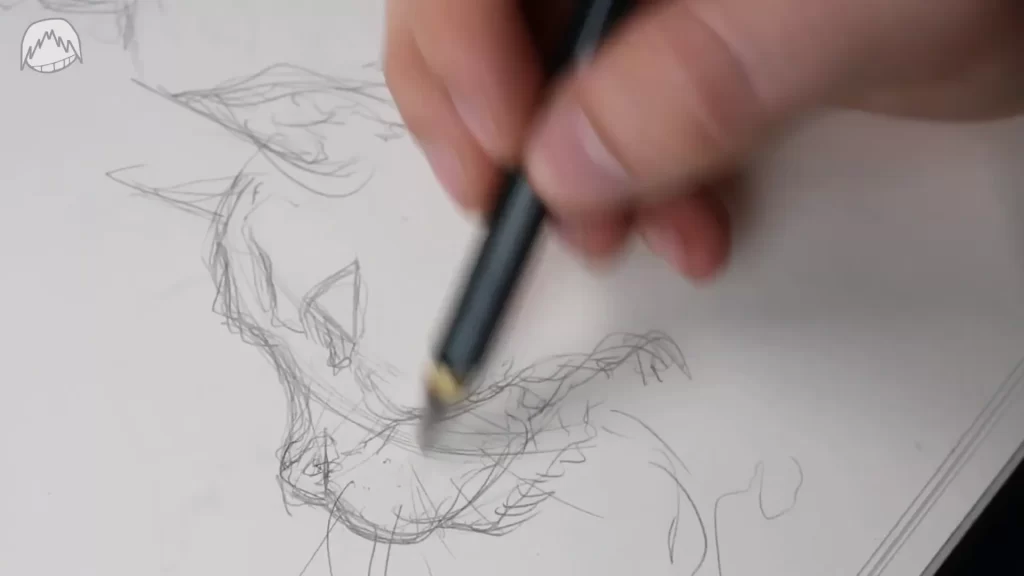
To start your canvas painting with acrylic colours, first choose your type of acrylic paint: soft body for fine details or heavy body for textured effects. Set up your workspace in a bright, airy spot with all your materials—acrylic paints, synthetic brushes, and a clean palette—easily accessible. Opt for a pre-stretched, primed canvas to save prep time. Sketch your design lightly before boldly applying paints, starting with lighter colors. As you explore canvas painting with acrylic colours, blend shades using a mix of broad and fine brushes, and allow each layer to dry fully to maintain vividness. Over time, you’ll discover various techniques, such as layering for depth, and learn how to properly maintain your supplies for longevity.
Understanding Acrylic Paints

Acrylic paints, known for their vibrant colors and quick drying time, offer immense versatility across various surfaces like canvas, paper, and wood. As you explore how to paint with acrylic paint, especially focusing on canvas painting with acrylic paint, it’s vital to understand the characteristics that make acrylics a favorite among artists.
Firstly, acrylics are water-soluble when wet, which means you can easily blend and adjust them as you work. However, once they dry, they become water-resistant, providing a durable finish to your artwork. This dual nature allows you to experiment with various effects and techniques while ensuring your art lasts.
Different types of acrylic paints, such as soft body, heavy body, and high flow acrylics, cater to different artistic needs. Soft body acrylics are perfect for smooth, detailed work or glazing, creating a translucent effect.
Heavy body acrylics retain brush strokes, ideal for adding texture to your acrylic on canvas. High-flow acrylics are excellent for airbrushing or achieving a watercolor-like consistency.
Gathering Essential Materials

Before you start your canvas painting, you’ll need to gather some essential supplies. Make sure you’ve got a range of acrylic paints, including the primary colors, and a selection of synthetic brushes that’ll work well with their thick texture. You’ll also need to pick the right type of canvas, keeping in mind the scale and style of your planned artwork.
Essential Painting Supplies
Gathering the right materials sets the stage for your acrylic painting project. When you’re learning how to paint with acrylics, starting with a solid foundation of supplies is essential.
You’ll need a selection of acrylic paints—make sure you’ve got primary and secondary colors, along with some neutrals. This variety allows for endless mixing possibilities, vital for painting on a canvas with acrylics.
Invest in synthetic brushes, which aren’t only durable but also come in a range of shapes and sizes. These are perfect for experimenting with different techniques and effects on your canvas.
You’ll also need a palette for mixing your colors. Whether you prefer a traditional wooden palette or find disposable sheets more convenient, having this space is key to managing your color blends effectively.
Additionally, don’t overlook the importance of a good water container to rinse your brushes and a drop cloth to keep your workspace clean. These items might seem minor, but they’re indispensable for maintaining a smooth workflow and protecting your area from spills.
Canvas Selection Tips
Choosing the right canvas is an essential step in preparing for your acrylic painting. The type of canvas you select can greatly impact the outcome of your artwork. If you’re just starting out or are on a budget, cotton canvases are your best bet. They’re affordable and versatile, suitable for a variety of painting styles and techniques.
For more detailed work, you might want to invest in a linen canvas. Though pricier, linen offers superior durability and a tighter weave, which makes it ideal for high-detail paintings.
Pre-stretched canvases are a convenient option as they often come pre-primed and ready to use, which saves you time and effort. This feature allows you to dive right into painting without the preliminary step of applying a gesso layer.
When selecting your canvas, consider the following:
- Material: Cotton for versatility or linen for detail.
- Preparation: Opt for pre-stretched and pre-primed canvases to start painting immediately.
- Weight: Choose a heavier canvas if you plan to apply thick layers of paint; a lighter canvas is sufficient for simpler, less textured works.
Make certain the canvas is tightly stretched and free from imperfections to guarantee a smooth painting experience.
Acrylic Paint Types
Now that you’ve selected the perfect canvas, let’s focus on the types of acrylic paints you’ll need to bring your artistic vision to life. Acrylic paints are wonderfully versatile, offering a range of types to match every technique.
Soft body acrylics, with their smooth, creamy texture, are perfect for general painting and glide effortlessly across your canvas. They’re great for blending and can be used in thin layers.
For more texture and to make your brush strokes stand out, you’ll want to grab some heavy-body acrylics. These are thicker and maintain the marks of your brush or palette knife, adding intriguing dimensions to your work.
If you’re into airbrushing or looking for a watercolor effect, high-flow acrylics are your go-to. These paints have a fluid consistency that spreads easily and works well for fine details.
Don’t forget about acrylic gouache for areas where you want rich, solid colors without reflections; it’s excellent for detailed pieces as it dries matte and opaque. And for those final touches, acrylic paint markers are ideal for adding sharp outlines and intricate details.
Along with these paints, make sure you have synthetic brushes, a mixing palette, and a water container to clean your brushes. Happy painting!
Setting Up Your Workspace

Before diving into your canvas painting project, setting up an appropriate workspace is vital. You’ll want to start by choosing a well-lit and ventilated area. Proper lighting is essential for seeing the true colors and details in your artwork, while good airflow helps keep the paint fumes at bay, making your painting experience more comfortable.
Make sure you have a sturdy table or easel to support your canvas. This setup should be at a comfortable height to avoid any unnecessary strain on your neck and back, allowing you to paint for longer periods without discomfort.
Additionally, it’s wise to lay down drop cloths or old newspapers around your workspace to protect your floors and furniture from accidental spills and splatters.
Here are a few more tips to optimize your painting environment:
- Organize Your Supplies: Keep your acrylic paints, brushes, palette, water container, and canvas within easy reach. An organized space helps streamline your creative process.
- Create an Inspirational Setting: Surround yourself with mood boards or artworks that inspire you. This visual stimulation can enhance your creativity.
- Comfort is Key: Choose a comfortable chair and make sure the room temperature is pleasant, so you remain focused and relaxed.
Basic Acrylic Painting Techniques

As you explore basic acrylic painting techniques, mastering the art of blending colors is essential for achieving smooth shifts and subtle changes in tone. Layering is another key technique; by applying thin coats from light to dark, you’ll add depth and richness to your canvases. These methods will enhance your paintings, giving them a more professional and visually appealing look.
Blending Colors Effectively
Mastering the art of blending colors effectively can transform your acrylic painting from simple to stunning. To start, apply a base layer of your lightest color. While it’s still wet, gradually add darker shades, allowing them to mix right on the canvas. This technique creates a smooth shift between colors.
Use a clean, dry brush to gently stroke over the area where two colors meet. This feathering softens the edges and results in a more natural look. Don’t rush; let each layer dry thoroughly before adding more color. This patience prevents the colors from becoming muddy and keeps each blend clear and vibrant.
Here are a few key tips to enhance your blending technique:
- Experiment with brushes: Different sizes and shapes can affect your blending. Flat brushes work well for broad areas, while round brushes are better for detailed spots.
- Use a glazing medium: This can increase the paint’s translucency, facilitating smoother blends without sacrificing color vibrancy.
- Practice makes perfect: The more you blend, the better you’ll understand how colors interact, improving your skill over time. Keep experimenting to find what works best for you.
Layering for Depth
Delving into the technique of layering can greatly enhance the depth and realism of your acrylic paintings. Start by applying a base layer to set the overall color scheme and mood. Make sure it’s completely dry before you add more layers. This foundational step is essential as it prevents the colors from blending unintentionally and keeps your artwork clear and vibrant.
For your initial layers, use lighter colors. As you progress, add darker shades. This method helps build dimension and a sense of depth, making elements in your painting pop. It’s important to let each layer dry thoroughly; otherwise, you’ll end up with muddy colors that can detract from the visual impact of your work.
Don’t shy away from experimenting with glazing techniques. Mix a glazing medium with transparent acrylic paint to achieve subtle color shifts. This can greatly enhance the depth of your painting, giving it a more professional finish.
Additionally, consider varying your brush strokes or incorporating tools like palette knives to introduce different textures and effects. Through these layering techniques, you’ll not only enrich your painting but also expand your skills as an artist.
Starting Your First Project

Initiating your first acrylic painting project is an exciting journey into the world of art. To begin, choose a straightforward subject like a still life or a landscape. This choice lets you concentrate on basic techniques without the pressure of complex compositions. Before you release your creativity on the canvas, there are a few vital steps you’ll need to follow.
First, prepare your canvas properly. If it’s not pre-primed, applying a layer of gesso is essential. This preparation not only smoothens the surface but also enhances the paint’s adherence, giving you a more vibrant output. Next, gather your materials: acrylic paints, a variety of synthetic brushes, a mixing palette, and a container for rinsing your brushes.
Start by sketching out your composition lightly with a pencil or charcoal. This preliminary sketch helps in placing your elements correctly before the paint ever touches the canvas. Then, proceed to apply paint in thin, even layers. Work from lighter to darker shades, allowing each layer to dry completely before proceeding.
Here are three key takeaways to keep in mind:
- Simplicity is key: Start with easy subjects to build confidence.
- Preparation matters: Properly prepping your canvas can make a significant difference.
- Patience pays off: Allow layers to dry fully for the best results.
Mastering Layering and Details

Once you’re comfortable with the basics of acrylic painting, it’s time to explore deeper into the art of layering and adding details. Layering is your secret weapon to achieve depth and intricacy in your paintings. Start with thin, almost transparent layers and gradually move to thicker ones. This technique allows underlying colors to subtly show through, giving your piece a rich, complex look.
Always let each layer dry fully before applying the next. This prevents the colors from blending unintentionally and keeps your details crisp and clear. If you’re aiming for more depth, mix your acrylics with a glazing medium. This creates translucent layers that can make your artwork feel more alive, without obscuring the work you’ve already done.
Now, for the details—this is where you truly bring your painting to life. Switch to smaller brushes to add fine lines, textures, or highlights. These small touches can make elements pop and guide the viewer’s eye through your composition.
Don’t be afraid to vary the opacity of your paint by diluting it with water or medium to achieve different effects, enhancing the overall dynamism of your canvas.
Maintaining Your Art Supplies

After mastering layering and details in your acrylic painting, it’s equally important to focus on the care and maintenance of your art supplies. By keeping everything in top shape, you guarantee the longevity and effectiveness of your tools, which, in turn, maintains the quality of your artwork.
First off, you should clean your brushes immediately after use. Using warm water and soap right after painting prevents the acrylic paint from drying on the bristles, which can cause permanent damage.
Make sure you reshape your brushes before laying them flat to dry to maintain their form.
Next, your acrylic paints need proper storage. Keep them in a cool, dry place, and always guarantee the caps are sealed tightly. This prevents the paints from drying out, avoiding waste and additional expense on replacements.
Lastly, here are three additional tips to keep in mind:
- Use a palette for mixing colors, and clean it promptly after each painting session.
- Regularly check and replace any worn-out brushes; damaged bristles can drastically reduce the quality of your strokes.
- Organize your supplies and use a checklist to guarantee you have everything needed for your next creative session.
Frequently Asked Questions
What Is the Sequence for Acrylic Painting?
You’ll start by sketching your design, then prime your canvas. Apply a base layer, let it dry, and gradually add more details with layers, finishing with highlights and textures to bring your painting to life.
What Are the Mistakes a Beginner Makes When Painting With Acrylics?
You might rush drying layers, skip using a palette, neglect cleaning brushes, misuse water or medium, and not experiment with various brush sizes, leading to less vibrant and detailed acrylic paintings.
How to Paint on Canvas With Acrylic Paint Step by Step?
To paint on canvas with acrylics, start by sketching your design lightly. Apply thin, light-colored paint layers first, letting each dry. Gradually add darker shades to enhance depth. Finish with a protective varnish.
Do You Need to Do Anything to a Canvas Before Painting in Acrylics?
You’ll need to prime your canvas with gesso before using acrylics to guarantee the paint adheres well and the colors pop. Pre-stretched canvases often come pre-primed, so you might skip this step.
Conclusion
Now that you’ve mastered the basics of acrylic painting, you’re ready to create stunning artworks on canvas. Don’t forget to experiment with different techniques and colors to find your unique style. Keep your brushes clean and your palette inspired. Remember, every artist starts somewhere, and each brushstroke brings you closer to mastering this vibrant medium. So, keep painting, keep learning, and most importantly, enjoy every moment of your artistic journey. Happy painting!


Pingback: Explore Stunning Washes: Watercolor Inspiration Guide